Why our physical environment is key to our health and well-being
Introduction to the proceedings from the 4th Conference on Architecture Research Care & Health - ARCH19. By Solvår Wågø and Siri M. Bakken
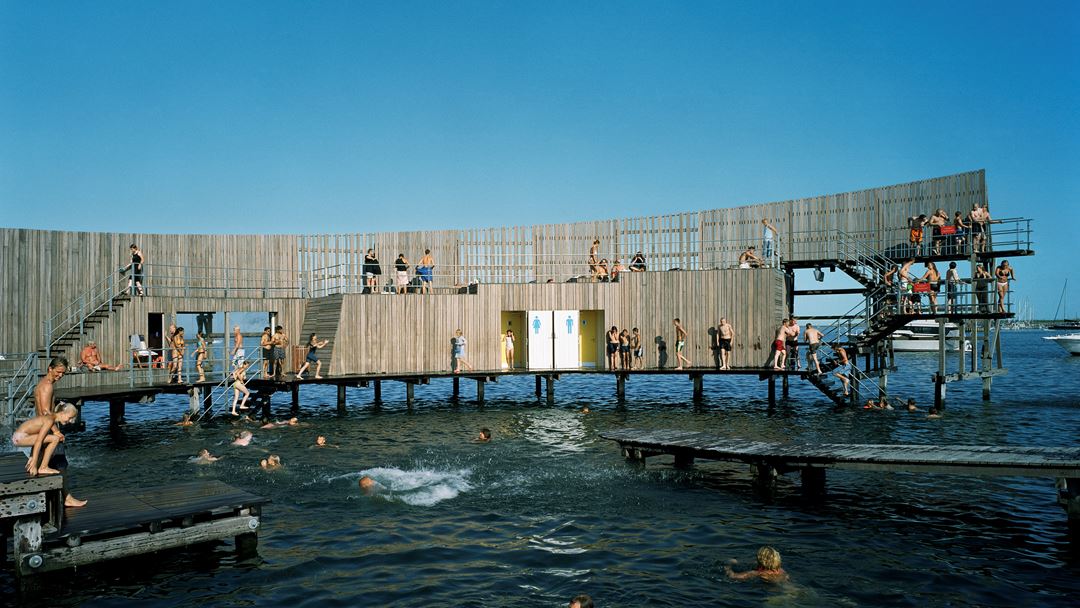
This is the introduction to ARCH19 – Proceedings from the 4th Conference on Architecture Research Care & Health
Think of something that gives you joy on your way to work. Something that makes your day a little bit brighter. It is more than likely that you are thinking about your physical environment. People need beautiful places in which to thrive and feel valued, whether they are travelling, staying in the city or in their neighbourhoods, or when socialising with others. Investment in carefully designed, high quality physical environments, with people in mind, is a strategic tool in community development. Our environment matters, and health and well-being are strongly linked .
We all know that the physical environment affects public health, but there seems to be a gap in terms of how we can apply our knowledge actively in community planning. We also need to know more about how this kind of knowledge is implemented in practice and how the built environment can be utilised. In this introduction we will elaborate briefly on some of these issues and offer examples that illustrate the potential of architecture and urban design as key to the promotion of public health. We will also take the opportunity to present a joint initiative (Gemini Centre2 ), recently established by research groups based in Trondheim, that is aiming to advance research-based knowledge in the field of health-promoting architecture.
Work to promote public health is often referred to as society's general efforts to influence what promotes and maintains health within the population. The World Health Organisation (WHO) defines health not just in terms of absence of disease, but as well-being and quality of life. Public health is all about how human populations or groups within these populations are doing. Good health is thus created in our everyday lives, in our meetings with other people, by our physical mobility and our sensual experiences. Our quality of life is influenced by many factors other than those generated in the health sector. Our physical surroundings thus make an important contribution to the great ‘public health calculation’, although the quantifiable health effect of the architecture around us has received little serious attention.
Architectural quality is about building societies where people can thrive and feel valued
Architecture and our physical environment are crucial to our health, well-being and quality of life. Architecture is about promoting quality of life using buildings, our physical surroundings and a well-functioning infrastructure. High quality architecture takes care of the totality. Architecture is all about how buildings function, fit in and enrich our environment, and how people use them in the context of their surroundings.
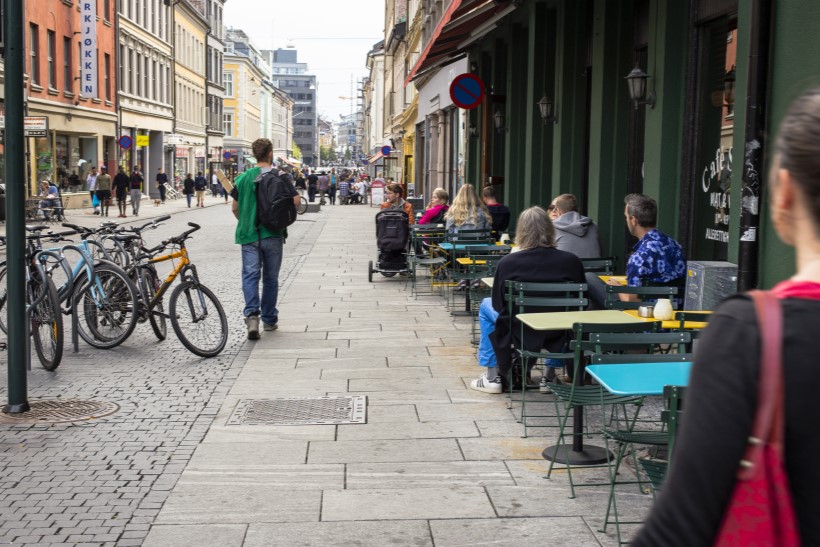
Johne/Sweco
Architecturally well-designed public transport hubs promote a well-functioning transport infrastructure, which in turn encourage more people to travel by public transport. The flower arrangements along Oslo's Carl Johan promenade are not only a key part of the city's preventive measures against terrorism, but are also colourful and attractive features at human scale along a broad city street surrounded by tall buildings.
Safe cycle paths and pedestrian areas offer opportunities for exercise, fresh air, daylight and contact with the elements, all of which increase our ability to concentrate during the stressful working day. Cycling boosts our energy, helps to reduce sick leave and, last but not least, reduces the need for new road development.
It is well documented that physical activity is positive for both our mental and physical health. A study published by the Norwegian University of Life Sciences (NMBU) has shown that daily walking, in contrast to organized workouts, is not linked to socio-economic status . This means that while nearly everyone walks, far from everyone actually exercises. The study highlights the importance of health promotion in urban planning, and argues for the development of attractive and walking-friendly urban environments. It also acknowledges the importance of promoting a broader understanding of outdoor recreation in urban settings, where walking around our neighbourhoods, both for recreation and commuting, should be regarded as an activity in the context of urban recreation.
Social and economic differences in Norwegian society are widening. We believe that living conditions for the disadvantaged, such as drug addicts, the mentally ill and other vulnerable groups, can be designed in such a way as to provide both security and support in coping with everyday life. In this way, architecture and the environment can make an active contribution to reinforcing what is commonly referred to as human dignity and to creating opportunities for social engagement by marginalized groups. Caring design can provide real support to inclusion, security, tolerance and the ability to cope. Empowerment is everything when it comes to social inclusion. Our physical surroundings are very significant in themselves, but cannot be isolated from the processes that influence our environment and our sense of belonging.
We need attractive places where we can socialise, and others where we can enjoy physical activity. People need other people, and a city needs to be lively, attractive and safe for its inhabitants. The creation of attractive neighbourhoods with pedestrian and cycle paths, easy walking distances to the shops, access to parks and nature, and safe and attractive shortcuts, encourages more people to get their feet wet rather than use the car. But in order for people to choose to walk or cycle, distances must be reasonable, and the experience positive and enjoyable.
A physically active population prevents crime, including violent crime. There is a demand for a focus on planning physical environments that promote trust between people. Research suggests that trust may arise at the interface between the environment and its users, but we appear to have a knowledge gap in terms of finding out how to target this issue.
Can architecture heal?
The manipulation of space by architecture may act as a catalyst in the creation of environments that promote positive therapeutic physical and psychological outcomes among medical patients. Safe inter-personal contacts and elemental experiences in a natural environment have been shown to have a positive impact on patients’ ability to cope with their illnesses, build resilient immune systems, and their eventual recovery.
Key aspects of healing environments integrated into hospital design are highly relevant in this respect. The term 'Healing Architecture' has been adopted to invoke the sense of a continuous process involving the creation of an environment that is both physically healthy and psychologically appropriate. In the design of hospitals, the relationship between architecture and nature is key to the recovery process. Natural vegetation stimulates the body’s senses and represents an important resource for hospital patients and their relatives, employees and local residents. Key to the design of hospital facilities is the concept of the integration of hospital buildings into park-like spaces, surrounded by a green infrastructure and surrounding natural landscapes.
In the west, much research has been completed into the therapeutic effects of nature. Both therapeutic gardens and pet therapy, which promote contact with nature and optimise healing environments for Alzheimer's patients, are wellestablished both in nursing homes and in schools and kindergartens for children with special needs.
Inspiring examples of such approaches were presented at the ARCH19 conference. These included the 'Open Air Hospital' (Friluftssykehuset) in Oslo, located close to Oslo University Hospital, which is an outdoor care retreat built in the form of a timber cabin in the middle of a natural woodland. A similar facility has been constructed at Kristiansand Hospital in southern Norway. These ‘natural’ retreats, located close to hospitals, offer patients and their families an opportunity for peace and quiet away from the hospital wards, but still close enough for easy access to emergency help. The cabins are available to all patients regardless of their disease. The concept was developed by Håvard Hernes in 2015, in collaboration with the Department of Psychosomatics and CL-Child Psychiatry at Oslo University Hospital, the Norwegian Outdoor Hospital Foundation and the architecture firm Snøhetta.
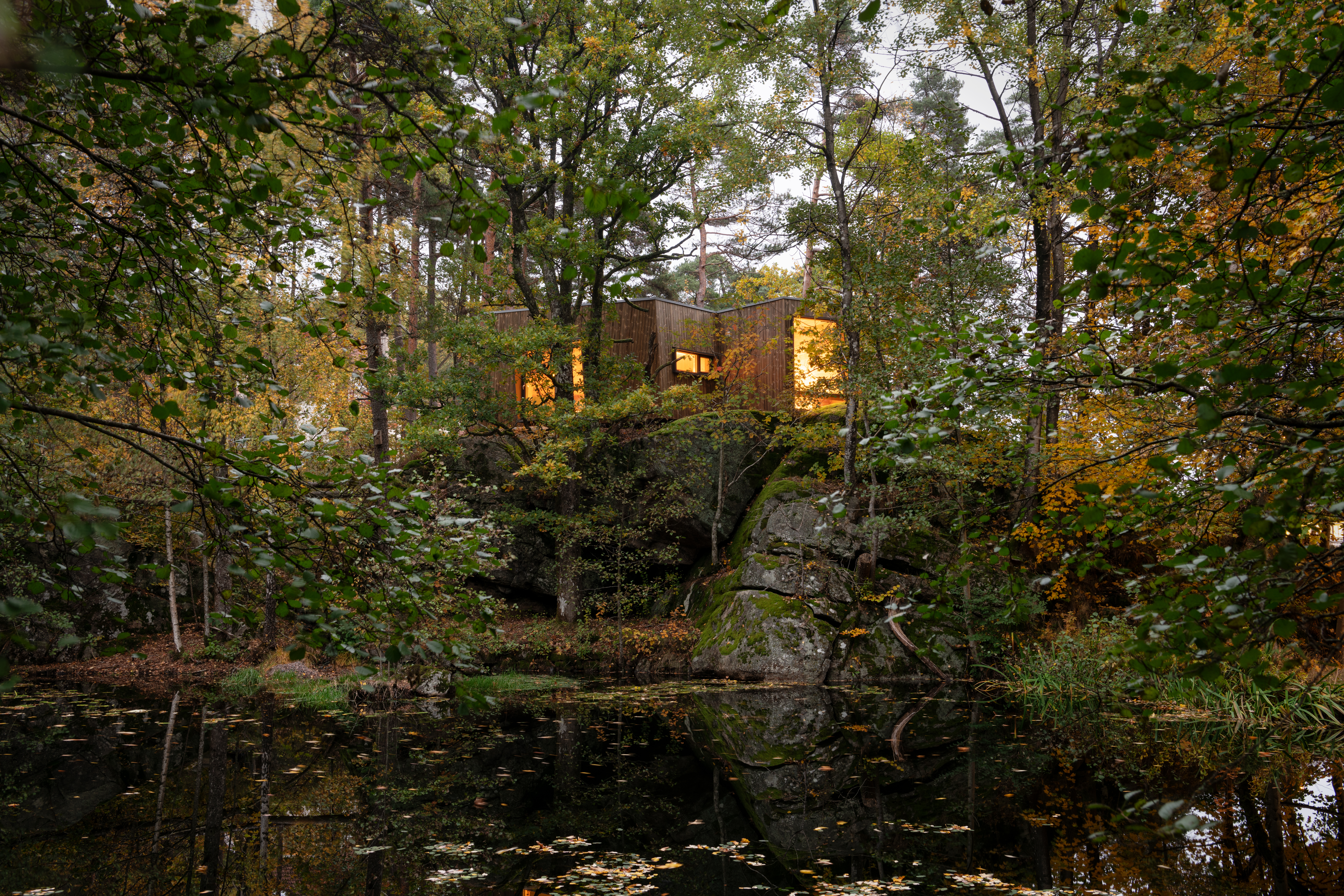
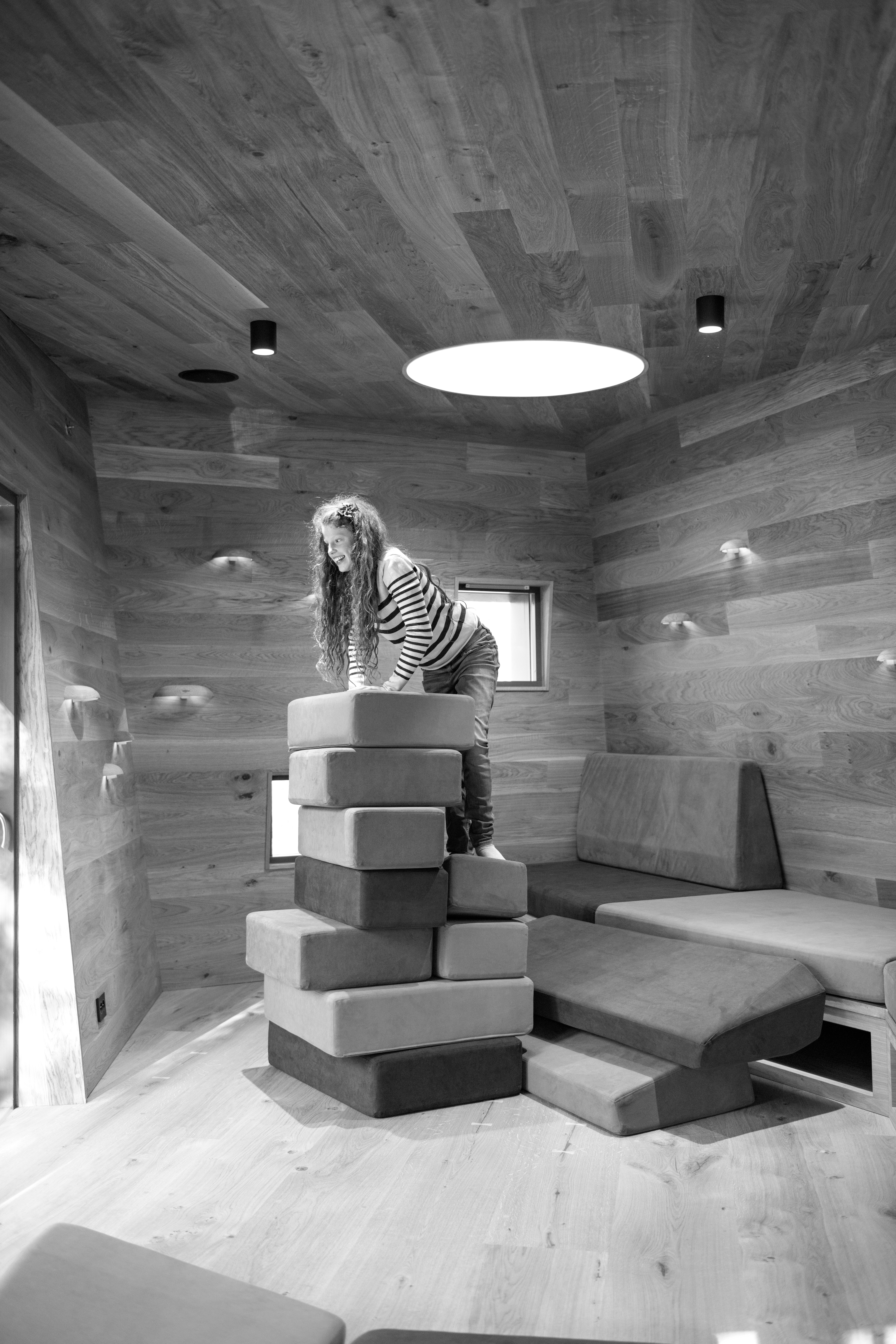
St. Olav’s University Hospital in Trondheim also offers innovative architectural solutions and urban design with the aim of promoting health and care. St. Olav’s is often referred to both as a hospital within a city and a city within a hospital. It has developed into its own neighbourhood within the city – a kind of medical suburb – emphasising patient focus and humanitarian care. St. Olav’s is also known as a ‘green hospital’, offering easy access to green infrastructure in its precincts and along the Nidelva river. The totality of life in and around the hospital, together with the university and its research activities, combine to offer a calm and therapeutic experience for patients and their relatives during difficult times.
People experiencing emotionally challenging situations are particularly sensitive to their physical surroundings. Nurse Mads Bøhler at St. Olav’s Hospital recognised the need for the hospital to offer a space where patients’ families and visitors could retreat and be alone with their thoughts.
Another example of a project presented at ARCH19, with vulnerable patients in mind, is the so-called ‘FRIrom’. This is a small timber structure installed on the roof of the maternity centre at St. Olav’s Hospital, offering patients’ relatives a retreat to which they can withdraw in the event of emotional episodes that may arise in difficult situations. The FRIrom was designed in 2011 by architecture students Sunniva Vold Huus and Maren Storihle Ødegård as part of their joint master's thesis at the Norwegian University of Science and Technology. Both the Friluftssykehuset and FRIrom provide excellent examples of how a focus on the promotion of good health, combined with elemental experiences, can boost well-being among hospital patients.
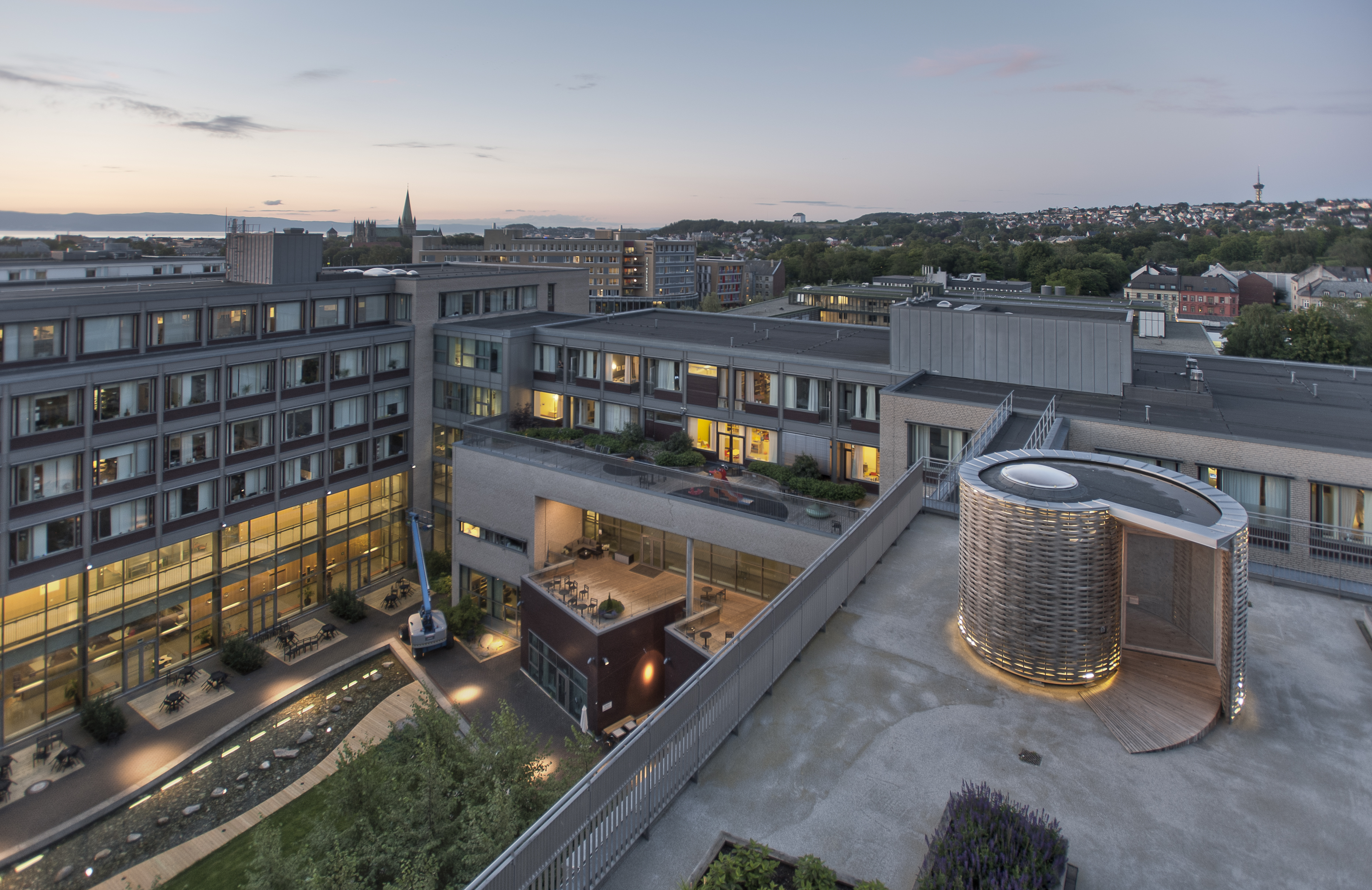
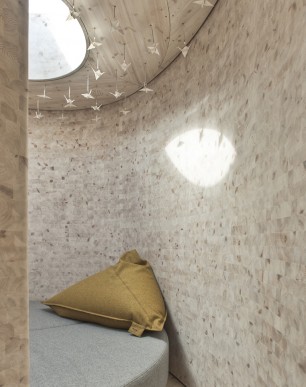
Sunniva Vold Huus and Maren Storihle Ødegård. Photo: Pasi Aalto, NTNU
Health-promoting architecture and the physical environment
The ARCH conferences aim to offer insight into recent research findings and to act as a showcase for research projects that focus on issues related to care, health, architecture and urban design. In May 2019, a centre (the HelsA Gemini Centre) was established in Trondheim to facilitate research into topics such as health-promoting architecture and the physical environment. The centre promotes collaborative research in the fields of architecture, health and social research. HelsA’s vision is to develop an international centre of excellence at which knowledge, education and research will combine to promote focus on the physical environment and public health as a natural part of developing a better society.
Many of the ideas derived from the ARCH19 conference have been implemented as part of the work carried out at HelsA, combined with input from some of the research communities involved with the conference. The HelsA centre is joint project involving SINTEF Community, health researchers at SINTEF Digital, and the Faculty of Architecture and Design and Department of Social Research at NTNU. The centre bases its work on an understanding of architecture as fundamental to a community’s health and well-being. An acknowledgement of this assertion is hardly controversial, but it continues to be overlooked in our discussions surrounding public health strategies. We often take our physical environment for granted. It can affect us deeply, but we are very little able to manipulate it and utilise it actively to promote our health and well-being. At HelsA we view architecture as a phenomenon subject to continuous change, being shaped and reshaped in ways that may or may not promote our wellbeing.
HelsA’s aim is to act as a hub, offering Norwegian municipalities and other stakeholders an arena where collaborative projects can be initiated. Our existing knowledge is limited and fragmentary and lacks interdisciplinary integration. We want to carry out interdisciplinary research projects that discuss and document the health implications of planning strategies, architectural solutions and technologies. We are also looking to develop pilot projects where innovative solutions can be tested. It will be crucial to be able to develop theoretical and methodological foundations that contribute towards consolidating knowledge-based arguments for human-centred approaches to research in healthpromoting environments.
We are hoping to encourage a public debate in which the socio-economic benefits of ideally designed architecture and physical surroundings are taken fully into account. We want to see our common knowledge about the importance of the environment used actively in building and urban designs that promote better public health. There is a great need for research into the impact that our physical surroundings have on human health and well-being. We also hope that the HelsA centre, together with the ARCH arena, will help to encourage greater focus, reflection and collaboration on topics addressing the potential that our physical surroundings have to offer in terms of added value, health, care and well-being in our communities.
Read more: ARCH19 – Proceedings from the 4th Conference on Architecture Research Care & Health